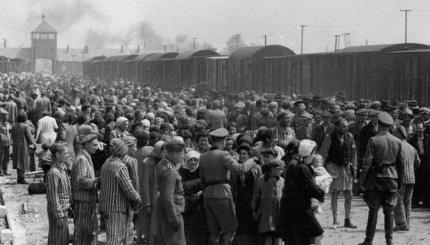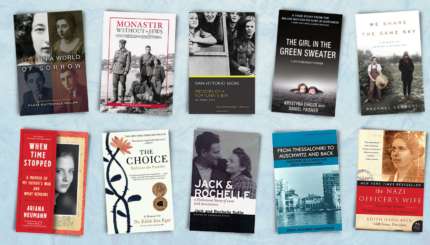On Monday, Ruth Franklin wrote about sharing a stage with Yann Martel. She is the author of A Thousand Darknesses: Lies and Truth in Holocaust Fiction.
I’m occasionally asked whether I really think that at this late date, sixty years on, anything new can be said about the Holocaust. But people have been asking this question virtually since the end of the war.
When François Mauriac famously encountered the young Elie Wiesel in Paris in the early 1950s, he was amazed, as he would write in the introduction to
Night
, that Wiesel’s book, “coming as it does after so many others and describing an abomination such as we might have thought no longer had any secrets for us, is different, distinct, and unique nevertheless.” Reviewing Piotr Rawicz’s surrealist Holocaust novel
Blood from the Sky
in 1964, Theodore Solotaroff wrote that “by now there has been a glut of books and articles, reminiscences and diaries, documentary histories and objective analyses that tell us everything we need to know about life in the ghettoes and prisons and death camps.” And yet those who write about the Holocaust continued to surprise then, as they still do now.
A few weeks ago I attended an informal talk by Yale historian Timothy Snyder about his new book,
Bloodlands
, which has already been hailed as a breakthrough work despite the well-plowed ground of its subject. What’s unique about Snyder’s book is that he approaches World War II from a geographical perspective rather than focusing, as most historians have done, on specific nations or political figures. Looking at the map of Europe, Snyder realized that the vast majority of the slaughter in World War II took place in a fairly small area: Poland, the Baltic states, and parts of the western Soviet Union. In this region, which he calls the “bloodlands,” fourteen million civilians died, as well as one-half of all the soldiers killed in the war. His book investigates what happened there.
Snyder argues that Auschwitz, which has come to be understood as a symbol of the Holocaust, “is in fact only the beginning of knowledge, a hint of the true reckoning with the past still to come.” To focus on the victims of that camp “excludes those who were at the center of the historical event.” His version of the story establishes an entirely different framework, focusing first on the destruction of the vast majority of Poland’s Jewish community — about 1.5 million in all — at Treblinka, Belzec, and Sobibor in 1942, and then on the “mass murder by bullets” carried out by the Einsatzgruppen in eastern Poland and the western Soviet Union during the preceding year, in which about 1.7 million Jews perished. Astonishingly, by the end of 1942, when Auschwitz had become fully operational, the Holocaust was “mostly over” — two-thirds of its victims already killed.
The question that lingers after reading Snyder’s remarkable book is why Auschwitz has come so powerfully to symbolize the Holocaust if it was actually an exception to the general rules of slaughter. Snyder points out that “we know about Auschwitz because there were survivors, and there were survivors because Auschwitz was a labor camp as well as a death factory.” In contrast, from the camps that were established solely for the
purposes of extermination there remain almost no survivors: 67 from Treblinka, around 50 from Sobibor, less than a handful from Chelmno and Belzec. Snyder also comments that the Auschwitz survivors were largely Western European Jews who tended to return to their home countries after the war, where they were free to write and publish and their memoirs could enter the public consciousness. The Eastern European Jews, who were much less likely to survive, “continue to be marginalized from the memory of the Holocaust.”
But the reason might be simply, as he said when I posed the question to him, that “Auschwitz is enough.” Faced with what so many have described as the prime embodiment of hell on earth, how many of us have the courage to search for other, greater hells?
Ruth Franklin’s A Thousand Darknesses: Lies and Truth in Holocaust Fiction is now available. Check back all week for her posts on the Jewish Book Council and MyJewishLearning‘s Author Blog.


